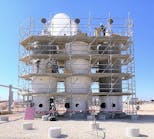Study: Glut of US ethane to remain; exports to balance propane, butane
A new study of US NGL markets from Simmons & Co. International, Houston, sees ethane remaining in oversupply near term and export growth bringing balance to propane and butane markets.
The combination of strong oil prices, robust drilling backlogs of unconventional plays in such areas as the Eagle Ford, Bakken, and Permian and in liquids-rich Marcellus and Utica, and new midstream and downstream infrastructure will increase NGL supply 2013-14.
Natural gas processing capacity will increase by 5.6 bcfd (6.9%) in 2013 and an additional 2.8 bcfd (3.2%) in 2014, says the study, “providing a growing stream of blended NGLs.”
New NGL pipeline capacity will also increase by 2-2.5 million b/d during 2013-15, with almost 60% of this capacity delivering to Mont Belvieu fractionation. In addition, 1.4 million b/d (54% total increase in US capacity) of fractionation capacity will come online 2012-15, 66% of which at Mont Belvieu.
In 2012, gas plant NGL production averaged 2.4 million b/d, up 8% or 184,000 b/d over 2011. Simmons estimates that potential NGL production could rise to 2.76 million b/d (15%, or 363,000 b/d) in 2013 and to 3.34 million b/d (21%, or 581,000 b/d) in 2014, assuming sufficient demand for all purity products.
Ethane rejection
The ethane market will be oversupplied, however, resulting in ethane rejection at many US gas plants, says the study. Leading natural gas processors have estimated that 200,000-250,000 b/d of ethane is currently being rejected. Simmons believes ethane rejection potential could exceed 400,000 b/d in 2014-15.
After factoring in such rejection, the study estimates NGL supply of 2.56 million b/d (7%, or 163,000 b/d) in 2013 and 2.89 million b/d (13%, or 333,000 b/d) in 2014. The study sees ethane in oversupply through 2016.
In 2012, it said, US gas plants produced on average 971,000 b/d of ethane. Potential ethane supply growth will substantially exceed the roughly 137,000 b/d of ethane demand growth by way of conversions, restarts, and expansions planned for 2013-15. The result will be ethane rejection of about 200,000 b/d in 2013, 449,000 b/d in 2014, and 545,000 b/d in 2015.
Incremental ethane supply is not fully absorbed by ethane demand, says the study, until new greenfield ethylene crackers begin operating in 2017. Seven such petrochemical plants with in-service dates of 2017 could consume 520,000 b/d, leading to a more balanced ethane market—assuming all projects are completed.
C3+ and exports
In 2012, US gas plant production of propane averaged 709,000 b/d, says the study, with total supply averaging 1.4 million b/d, including refinery production and imports. Simmons’ models show growth of almost 100,000 b/d in 2013 and 169,000 b/d in 2014.
Propane supply growth is closely matched, they show, with increased LPG export capacity additions of 95,000 b/d in 2013, 127,000 b/d in 2014, and 50,000 b/d in early 2015. Planned propylene dehydrogenation could increase propane demand by 168,000 b/d by 2015-16.
While Simmons expects healthy butane supply growth in 2013-14, it believes LPG export terminals mentioned previously will have sufficient capacity to export propane and butanes, potentially shifting both propane and butane markets to better balance by late 2014 or 2015.

